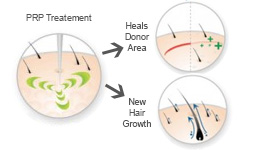Platelet-rich plasma (PRP) injections are a medical treatment that has been explored for various purposes, including promoting hair growth. Here's a general overview of how PRP injections may help with hair growth:
Preparation of PRP:
Blood is drawn from the patient, typically from the arm.
The drawn blood is then processed using a centrifuge, which separates the plasma from other blood components.
The resulting plasma is rich in platelets, growth factors, and other bioactive proteins.
Introduction of PRP into the Scalp:
The concentrated PRP is then injected into the scalp in the areas where hair loss or thinning is evident.
The injection process is often done using a fine needle, and the procedure is usually performed in a clinical setting.
Stimulation of Hair Follicles:
Platelets in PRP treatment Islamabad contain growth factors that can stimulate hair follicles and promote hair growth.
Growth factors are signaling molecules that play a role in cell regeneration, tissue repair, and overall healing.
Increased Blood Supply:
PRP injections may enhance blood circulation to the hair follicles, delivering more oxygen and nutrients to the cells.
Improved blood supply can contribute to the health and vitality of the hair follicles.
Reduction of Inflammation:
Some studies suggest that PRP injections may help reduce inflammation in the scalp, which can be associated with certain types of hair loss.
Activation of Stem Cells:
PRP is thought to activate stem cells in the hair follicles, promoting the regeneration and differentiation of cells involved in hair growth.
It's important to note that while there is some evidence supporting the efficacy of PRP in promoting hair growth, results can vary from person to person. Additionally, the optimal treatment protocol, including the number and frequency of injections, is still an area of ongoing research. PRP therapy is generally considered safe, as it uses the patient's own blood, but individuals considering this treatment should consult with a qualified hair restoration specialist in Islamabad to discuss potential benefits, risks, and expectations based on their specific situation.



